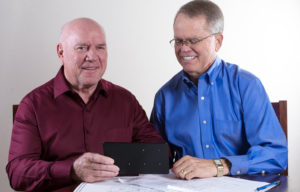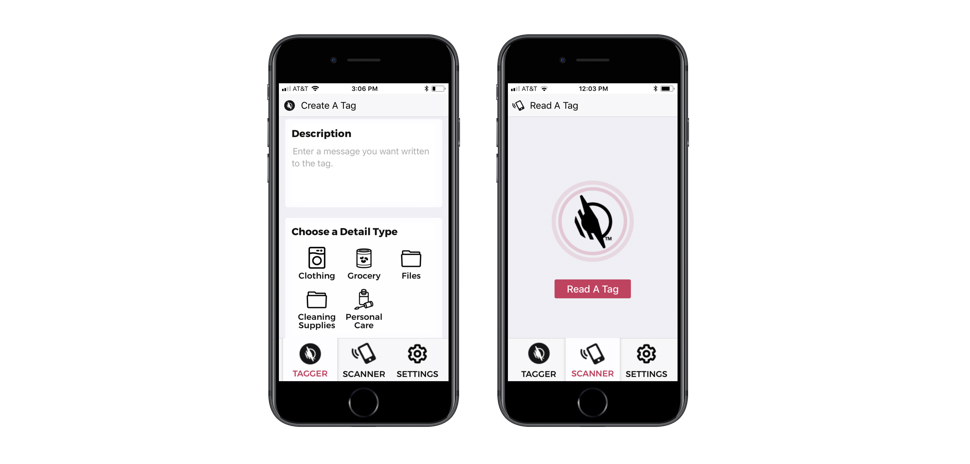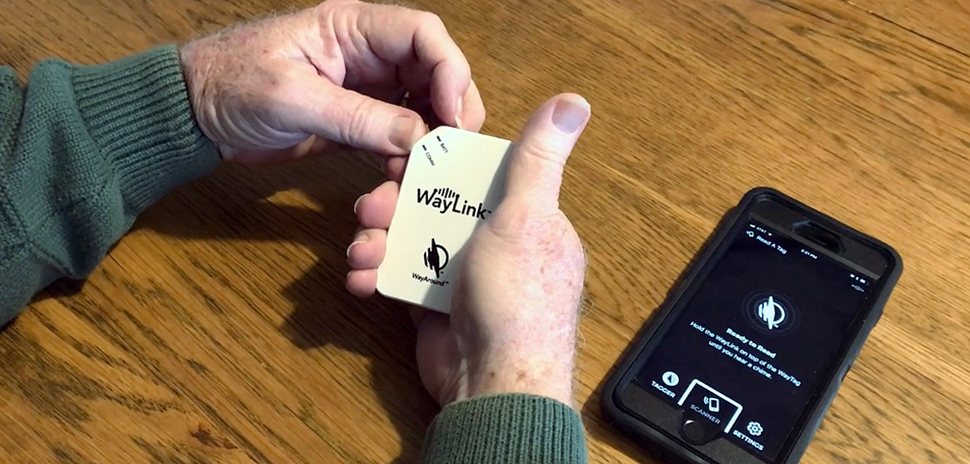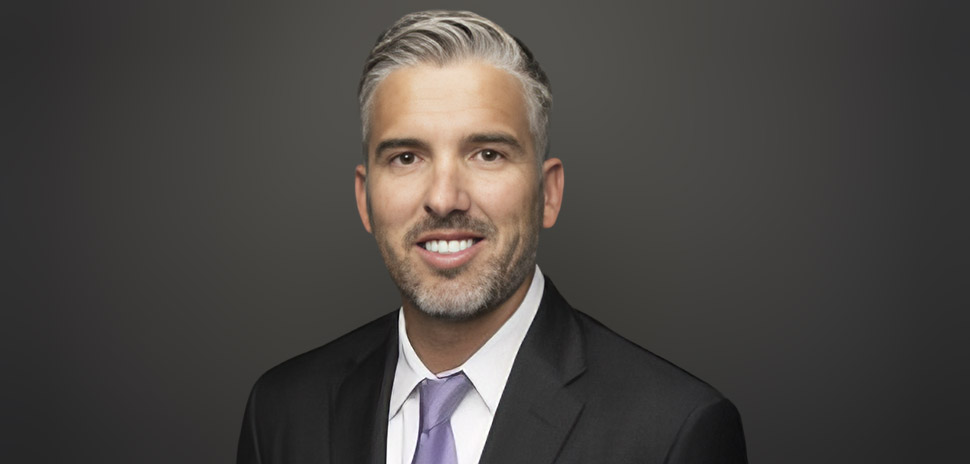Dallas-based WayAround has developed a mobile app using near-field communication technology that is making everyday life easier for those with vision loss or blindness.

Armand Fisher and Darwin Belt [Photo courtesy of WayAround]
The WayAround app, developed by co-founders Darwin Belt and Armand Fisher, uses tags that can attach to anything; files, clothes, food, and more. Those tags have information coded into them that allows the visually-impaired user to hear information about the item the tag is attached to.
“The app allows blind or low-vision [individuals] to get information not just in a recording, but in a structured data format,” Belt said. “You don’t have to listen to all the information, you can choose.”
Say you have a sweater in your closet, the tag would attach to the right hem of it, and you put your phone up next to it. The tag communicates to your phone not only what that item is, but the fabric, washing instructions, and even how long it has been since it was last washed. The only thing the user has to do is swipe back and forth to get the desired information.
“Most apps have voiceover capability, but the accessibility is an afterthought. We started with that thought in mind.”
Jessica Hipp
Near-field communication, also called NFC, is a type of contactless communication between devices such as smartphones or tablets. It allows a user to wave a smartphone over a NFC-compatible device to send information without touching the devices together.
“Most apps have voiceover capability, but the accessibility is an afterthought. We started with that thought in mind,” WayAround Marketing Director Jessica Hipp said. “We have worked our app to work seamlessly, making sure all functions are easy to use on any platform.”
APP DEVELOPED BY ARCHITECTS WHO HAVE PERSONAL EXPERIENCE WITH VISION LOSS
The app has been developed over the last year and a half, but the story of how it came to be started decades ago in the late 1970s when co-founders Belt and Fisher met each other for the first time during a college internship.
Afterwards, both went their separate ways and began their own careers. It was their common interests that ultimately led them back to each other.
Fisher has a background in architecture and worked on government contracts, while Belt started a company in the late 1980s that specialized in building information modeling. Both were successful in their careers and gained valuable skills that would prove helpful in developing WayAround.
Their entrepreneurial inspiration blossomed from shared adversities.
At age 30, Belt lost his vision and successfully underwent a vitrectomy to restore his sight. Since then, he has been diagnosed with wet macular degeneration, significant peripheral vision loss, and nyctalopia (night blindness). More than a decade ago, Fisher began to lose his vision from idiopathic ischemic optic neuritis and became blind in a few weeks.
Soon the pair had an “aha” moment.
“I asked Armand [Fisher] what he thought was hardest about being visually impaired,” Belt said. “He told me that is was easy for him to get around with the help of his wife out in public, but if he had to go the restroom he was on his own.”
OUTSIDE CRITIQUES HELPED IMPROVE WAYAROUND
That discussion led them to seek a solution for the problem.
Their first versions of WayAround had the tags out where visually impaired people would have to physically touch the tags with a device to communicate information. They wanted to refine their ideas, so they looked for outside critiques.
“We went to the director of the National Federation of the Blind with our idea,” Belt said. “He told us his biggest problem was that he wouldn’t want to touch something in a bathroom.”
From there, the entrepreneurs moved on to near-field communication technology and the tags. To test their idea, the men went to the Perkins School for the Blind in Watertown, Massachusetts.
“Already people have told us that they go to sleep at night thinking about how this technology is going to be life-changing.”
Darwin Belt
“What we learned from the school was that we needed to be able to put our app on the iPhone,” Belt said. “Unfortunately we were using NFC technology, and Apple hadn’t opened it up to third-party users.”
The big break came in early July when Apple announced it was opening NFC to the public.
By September, the men had developed their technology to be iOS compatible.
On Tuesday, the app was released on the Apple store. It is free for download.
Currently, WayAround is focusing on in-home aid and will then move toward the public sector. Belt and Fisher said the goal is to see their app and tags used everywhere.
“Already people have told us that they go to sleep at night thinking about how this technology is going to be life-changing,” Belt said.

The WayAround App is currently available on the Apple store.
![]()
Get on the list.
Sign up to keep your eye on what’s new and next in Dallas-Fort Worth, every day.
































